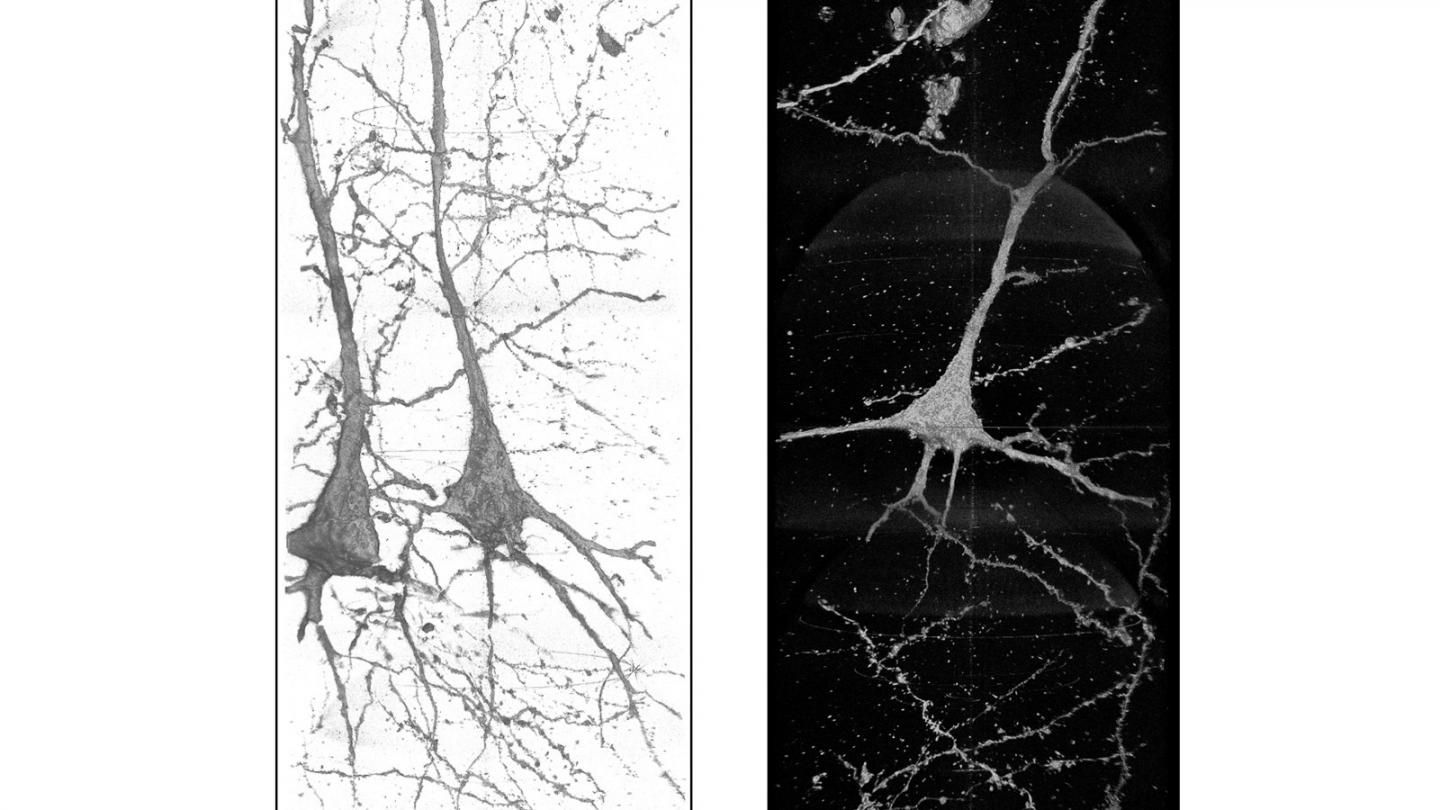X-ray Reveals Neuron Differences in Patients with Schizophrenia
High resolution, 3D images reveal differences in the structure of neurons from healthy brains and those from patients with schizophrenia.
Patients with schizophrenia have unique neuron structures that are not only different from healthy patients, but also from other patients with the condition.
By using X-rays and high-resolution optics that can capture 3D images of tissues, a team of researchers from Japan compared brain tissue from patients with schizophrenia to individuals with good mental health. The differences indicate that neuron structure is directly related to the disorder, said Ryuta Mizutani, Ph.D., professor of applied biochemistry at Tokai University. These findings could potentially lead to improved care in the future.
“The current treatment for schizophrenia is based on many hypotheses we don’t know how to confirm,” he said. “The first step is to analyze the brain and see how it is constituted differently.”
Mizutani’s team published its findings in Translational Psychiatry.
Schizophrenia affects millions of people worldwide, but there is no cure. The key to treating the delusions, hallucinations, and thought-processing difficulties that accompany the condition lies in gaining a better understanding of how it arises to begin with.
These 3D images of neurons in the brain of a schizophrenia patient show wavy, distorted neurites, which indicate that the condition may be linked to the shape of the neurons. X-ray images were taken at the Advanced Photon Source.
CREDIT
Ryuta Mizutani

To get that understanding Mizutani’s team brought eight small samples of brain tissue to the U.S. Department of Energy’s Argonne National Laboratory for analysis with its Advanced Photon Source (APS). All the samples – four from healthy individuals and four from the brains of people with schizophrenia -- were collected post-mortem.
APS offers powerful X-rays and extremely high-resolution optics – as high as 10 nanometers, roughly 700 times smaller than the width of the average red blood cell, Mizutani said. With this technology, the team was able to capture 3D images of the tissue.
“There are only a few places in the world where you can do this research,” he said. “Without 3D analysis of brain tissues this work would not be possible.”
Still the work is challenging, he noted, because the neurons being imaged can be centimeters long and can come in various sizes and shapes.
Upon examining the neurons, Mizutani’s team noticed a distinct difference between those from healthy brains and those from the brains of patients with schizophrenia. Healthy neurites were smooth and thick – those from brains with schizophrenia were twisted and thin. In addition, all images of the healthy neurons were relatively similar, but those from patients with schizophrenia deviated significantly even from each other.
“The schizophrenia cases shared a thin and tortuous neuronal network compared with the controls, suggesting that the neuronal structure is associated with the disorder,” he said. “The large heterogeneity of neurons in the schizophrenia cases can cause functional imbalances between brain areas that may result in disorders of total brain function.”
More research is needed, he said, to determine exactly how these neuron structures relate to the onset of disease, as well as to design treatment options that alleviate the symptoms. It will take time to image the full human brain, but as the X-ray technology at APS continues to improve, it will render greater sensitivity and image resolution, potentially accelerating the process.
Ultimately, Mizutani said, the goal is for fewer people to suffer the effects of schizophrenia.
“The differences in brain structure between healthy and schizophrenic people must be linked to mental disorders,” he said. “We must find some way to make people healthy.”
For more coverage based on industry expert insights and research, subscribe to the Diagnostic Imaging e-Newsletter here.